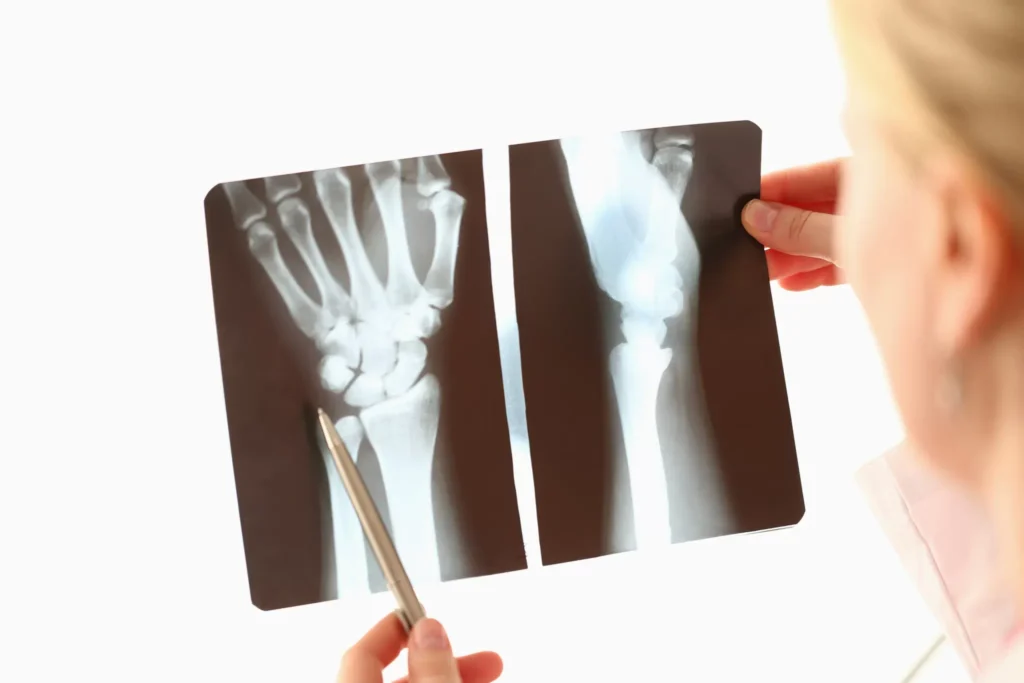The human arm is a complex structure made up of bones, muscles, tendons, nerves, and ligaments that work together to provide strength and flexibility. The arm itself consists of three major sections:

The single long bone that extends from the shoulder to the elbow.

Two bones running parallel from the elbow to the wrist.

The hand is made up of small bones, tendons, and nerves that enable precise movements like gripping, typing, and lifting.

Arm and finger injuries can vary in severity, from minor sprains to complex fractures and nerve damage. Some of the most common types of injuries include

Arm fractures, including breaks in the humerus, radius, ulna, or wrist bones, are common, often resulting from falls, car accidents, or sports injuries. Finger fractures can also occur, affecting the ability to grip or perform fine motor tasks.

Joint dislocations can happen in the shoulder, elbow, or wrist, typically caused by a fall or impact. A dislocation involves the bones of a joint being forced out of their normal position, leading to severe pain, swelling, and loss of function.

Tendons connect muscles to bones, and injuries like tendonitis or tears can occur from overuse or sudden trauma. Common tendon injuries include biceps tendon tears and rotator cuff injuries in the shoulder.

Severe accidents, especially in the workplace or in car crashes, can result in crush injuries to the arm or hand. These injuries often involve extensive damage to muscles, nerves, and bones, sometimes leading to amputation.
Arm and finger injuries can occur in a variety of circumstances, many of which involve negligence or unsafe conditions. Some of the most common causes include

Car, truck, or motorcycle accidents are leading causes of arm and finger injuries, with victims often suffering fractures, dislocations, or crush injuries from the impact.

Construction, manufacturing, and healthcare workers face high risks of arm and hand injuries, often resulting in workers’ comp or third-party claims.

Falls are a frequent cause of arm and wrist fractures, as individuals instinctively try to break their fall with their hands. or managers may be held liable for failing to maintain safe conditions.

Contact sports like football, basketball, lead to injuries, such as fractures or ligament tears in the arms and hands. Athletes may require surgery and long-term rehabilitation.

Malfunctioning or defective equipment, , can result in serious arm or hand injuries. Product liability claims may be filed against manufacturers or retailers in these cases.

In rare instances, arm and finger injuries can result from medical negligence, such as improper treatment or surgical errors that cause , infections, or failed healing after fractures.
Understanding the cause of your arm injury is crucial for determining liability and securing proper compensation.
The aftermath of an arm or finger injury can be severe, long-term consequences that affect a person’s ability to work Some of the potential long-term effects include
Even after surgery or rehabilitation, many individuals experience ongoing pain, stiffness, or discomfort in the injured area.

Serious injuries, particularly fractures or nerve damage, can making it difficult to perform everyday tasks like lifting, typing, or writing.

Amputations or severe nerve damage can result in the permanent in the affected arm or hand, requiring the use of adaptive devices.

Victims of arm and finger injuries may be entitled to various forms of compensation, depending on the severity of the injury and the circumstances of the accident. These can include

Compensation for past, current, and future medical treatment, including hospital stays, physical therapy, and medication.

Reimbursement for income lost during recovery and compensation for reduced earning capacity if the injury leads to long-term disability

Non-economic damages for the physical pain and emotional distress caused by the injury, including impact on quality of life.
Important legal factors that can affect your Arm injury claim and potential compensation.

Legal deadlines for filing your claim vary by state. Missing these deadlines can prevent you from seeking compensation.

Your compensation may be reduced if you’re found partially at fault. Understanding how fault is determined is crucial.

Previous injuries or conditions may affect your claim. Proper documentation and medical evidence are essential.
Seek medical attention immediately, document the scene, gather witness info, and report the incident to help protect your health and legal rights.
Drivers, property owners, employers, or product manufacturers may be responsible if their negligence caused your injury. A lawyer can identify fault.
Knapp Moss investigates fault, collects evidence, handles insurers, and pursues maximum compensation for medical bills, pain, and lost income.
You may seek compensation for treatment costs, therapy, lost wages, reduced function, and emotional distress when negligence is involved.
By clicking Sign Up, you are confirming that you agree with our Terms and Conditions.